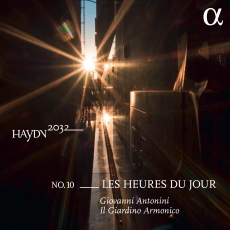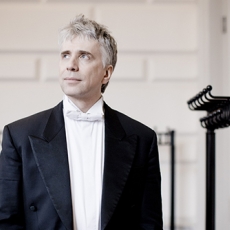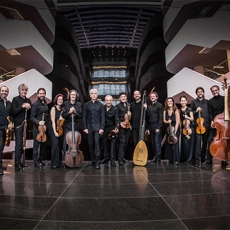Giovanni Antonini & Il Giardino Armonico - Haydn 2032, Vol. 10: Les heures du jour - Gramophone
Shortly after Haydn’s appointment as Esterházy vice-Kapellmeister, the Vivaldi-loving Prince Paul Anton suggested (ordered?) a series of four ‘quartets’ depicting the times of day. In the event Haydn’s answer to The Four Seasons became three symphonies, opening with a sunrise and ending with a distinctly un-threatening evening tempesta. Giovanni Antonini here makes good the shortfall with Mozart’s beguiling Serenata notturna, which like the Haydn symphonies puts an individual slant on the Baroque concerto grosso. From the swagger of the initial march, propelled by the dry rattle of period timpani, via a dapper minuet to the subversive antics of the finale, Antonini and his expert band (based on 19 strings) catch all the music’s grace and caprice. In the finale Mozartian mischief is always in the air, culminating in crazy improvised cadenzas for violin (slyly quoting Haydn’s Le soir) and double bass.
The symphonies, too, exude a spirit of shared enjoyment. Fast movements fizz and crackle, with virtuoso sallies from the Giardino Armonico soloists. Bass lines are always vital and animated, with never a hint of auto-chug. Stinging attack and antiphonally jousting violins make the storm in Le soir as vivid as I’ve heard. The minuets are nimbly paced, light of touch. The one in Le soir becomes a swinging waltz, while the potentially lugubrious solos for violone and (in Le matin) bassoon in the trios have a doleful charm.
As in the Mozart, violinist Stefano Barneschi plays with theatrical flair and subtly varied articulation. He and his superb co-soloists make each of the slow movements memorable. The quasi-operatic violin recitative in Le midi has a passionate, speaking eloquence. There is dulcet violin-cello duetting in the Andante of Le matin, with freely decorated repeats, while the ‘walking’ Andante of Le soir – not usually a movement I look forward to – is shaped with a wistful delicacy, again enhanced by telling touches of ornamentation.
There’s plenty of choice among these most recorded of Haydn’s early symphonies, of course, with the conductor-less Freiburg Baroque Orchestra my own favourite – until now. Unlike Il Giardino Armonico, the Freiburg players make all second-half repeats in sonata movements, and use a (discreetly balanced) harpsichord continuo. It’s easy to succumb to the lure of novelty, of course. But close comparisions confirm that the Italians surpass even the Freiburgers in inventiveness, brio (tempos are often a notch more mobile, to the music’s advantage) and that crucial Haydnesque sense of fun.


